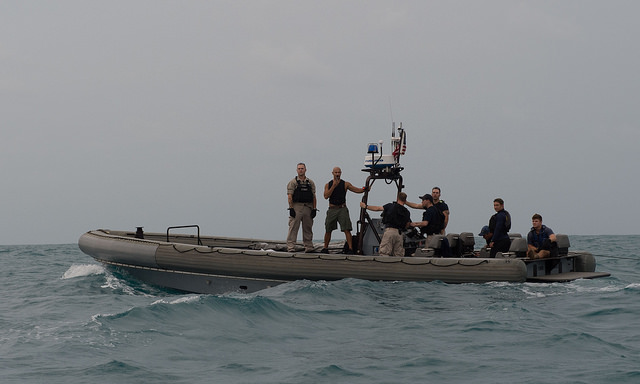January 14, 2015
 |
| Searching for AirAsia QZ8501 // photo by Official U.S. Navy Page via Flickr |
Jonathan Pearlman Sydney, The Daily Telegraph, January 14, 2015
With the black boxes from AirAsia QZ8501 both retrieved, how long will it take for officials to analyse the data?
Air crash investigators working with the black boxes from AirAsia flight QZ8501 are likely to know the cause of the crash within a week – and possibly “within four or five days” – but the public will probably have to wait about a month for an official explanation.
AirAsia QZ8501 The flight data recorder from the crashed Airbus A320 has already been retrieved and sent to Jakarta for analysis.
Here are the next steps involved in the intricate and complicated process of accessing and analysing the data from the plane’s black boxes.
Accessing data from the black boxes
David Gleave, a researcher at Loughborough University and a former aviation safety investigator, told The Telegraph that the boxes will reveal “what went on but not why it went on”. He said it could take about two days to finish recovering the recorders and accessing their data and the initial analysis will then take up to a week but could be much quicker.
“The investigators will have an idea of what went on within a week [of accessing the data] – sometimes it can be much, much quicker,” he said.
“Including two days or so for recovery, it could take only four to five days – but whether the investigators release that information is up to them.
Typically, the first step involves keeping the recorders in water and transporting them to a lab for analysis. They will be kept under strict guard at all times.
Indonesian authorities have indicated the analysis is likely to be done in Jakarta, with the assistance of international investigators including French officials because the plane was made in France.
Building a visual simulation of flight QZ8501
The black boxes, once in the lab, will be opened and computer memory chips will be taken out to be dried in a special oven. This can take 24 hours and will remove humidity and seawater. Some cleaning may also be required.
Typically, about two working days after the boxes are recovered, the data will be downloaded using special software. Separately, the timing associated with each bit of data will need to be checked.
Several programmes are capable of quickly using the flight data to build a simulator-style visual representation of the flight, including external and cockpit views.
Additional checks will be conducted to ensure the data were properly recorded and were not affected by malfunctions. In addition, the final data – covering up to the last four seconds of the flight – may not have been properly transferred to the chip and may need to be separately downloaded.
The voices from the cockpit
Separately, the pilot voice recordings will be taken to a sound lab for analysis. Experts such as interpreters or local pilots or experienced pilots from the Airbus A320 may be needed to interpret or identify particular comments or noises from the cockpit. Finally, a transcript will be produced, typically removing non-pertinent words such as expletives or personal comments.
Producing the transcript, Mr Gleave said, can be a gruelling process.
“You need to listen to the recording numerous times to make a transcript,” he said.
“Psychologically it can be difficult – you are listening to guys dying over and over again.”
The final report: eighteen months away
Finally, the cockpit recordings and the flight data are combined to provide a complete picture of the flight. It will then be for the investigators to conclude the reasons for the crash and to make findings aimed at preventing a tragic repeat.
Mr Gleave said investigators typically release an initial factual statement within a month of the crash – or by the end of this month for flight QZ8501 – but the report will not make conclusions and is unlikely to provide explicit comments on issues such as pilot error.
These issues will be addressed by the full accident report, which should finally provide an official explanation of the crash. This report would usually take about eighteen months to complete and make public.
This article was written by Jonathan Pearlman Sydney from The Daily Telegraph and was legally licensed through the NewsCred publisher network.
![]()
What do you think of this $type?











